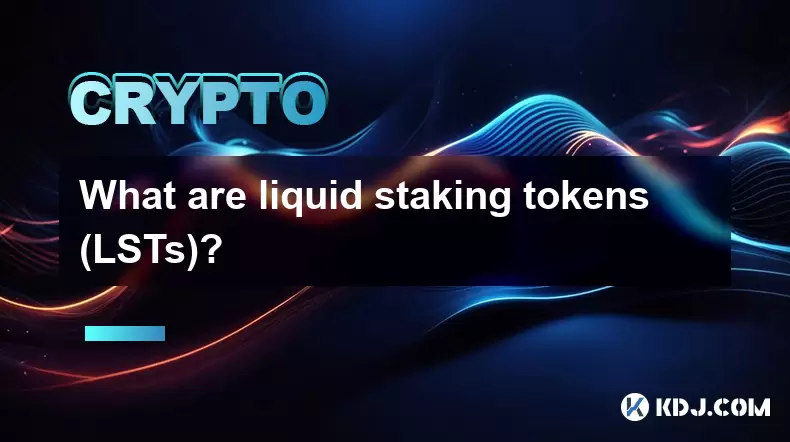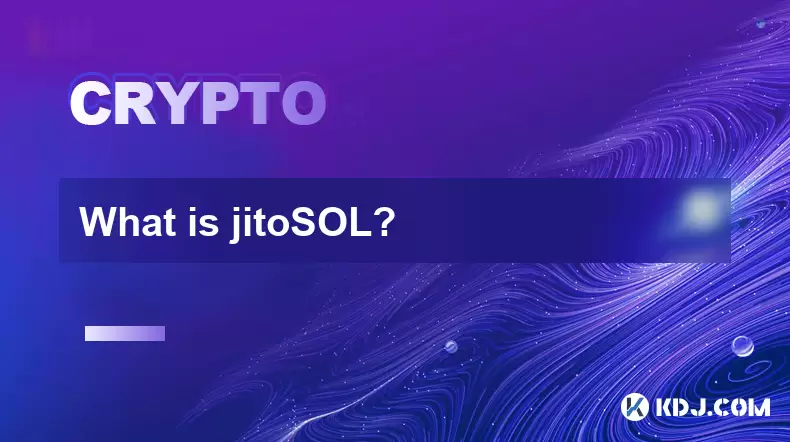-
 Bitcoin
Bitcoin $118100
-0.44% -
 Ethereum
Ethereum $3585
5.43% -
 XRP
XRP $3.434
5.65% -
 Tether USDt
Tether USDt $1.000
0.02% -
 BNB
BNB $743.8
3.89% -
 Solana
Solana $178.7
3.84% -
 USDC
USDC $1.000
0.03% -
 Dogecoin
Dogecoin $0.2381
12.81% -
 TRON
TRON $0.3270
3.62% -
 Cardano
Cardano $0.8315
4.93% -
 Hyperliquid
Hyperliquid $44.51
-4.42% -
 Stellar
Stellar $0.4710
1.52% -
 Sui
Sui $3.896
-2.51% -
 Chainlink
Chainlink $18.09
6.98% -
 Hedera
Hedera $0.2681
9.31% -
 Bitcoin Cash
Bitcoin Cash $516.7
4.83% -
 Avalanche
Avalanche $23.95
6.96% -
 Shiba Inu
Shiba Inu $0.00001490
5.67% -
 UNUS SED LEO
UNUS SED LEO $8.966
0.80% -
 Toncoin
Toncoin $3.294
4.39% -
 Litecoin
Litecoin $105.4
4.69% -
 Polkadot
Polkadot $4.356
5.30% -
 Uniswap
Uniswap $10.29
17.25% -
 Monero
Monero $327.9
-3.04% -
 Bitget Token
Bitget Token $4.942
4.33% -
 Ethena USDe
Ethena USDe $1.001
0.08% -
 Pepe
Pepe $0.00001348
2.17% -
 Dai
Dai $1.000
0.02% -
 Aave
Aave $320.8
0.58% -
 Bittensor
Bittensor $411.8
-4.07%
What are liquid staking tokens (LSTs)?
Liquid Staking Tokens (LSTs) let users stake crypto assets while keeping liquidity, enabling participation in DeFi and earning rewards without locking up funds.
Jul 18, 2025 at 04:50 pm

What are Liquid Staking Tokens (LSTs)?
Liquid Staking Tokens (LSTs) are digital assets that represent a user's stake in a proof-of-stake (PoS) blockchain network while allowing the user to retain liquidity. In traditional staking, users lock up their tokens to validate transactions and earn rewards, but during this period, the tokens are illiquid and cannot be used elsewhere. LSTs solve this issue by enabling token holders to stake their assets and receive a tokenized representation of their staked holdings, which can then be used in other decentralized finance (DeFi) protocols.
This innovation has gained significant traction in the crypto space, particularly on platforms like Ethereum, Cosmos, and Solana, where staking is a core mechanism for network security and governance. The introduction of LSTs allows users to participate in staking without sacrificing the ability to engage in other yield-generating activities.
How Do Liquid Staking Tokens Work?
When a user stakes their native tokens (e.g., ETH, ATOM, SOL) through a liquid staking provider, they receive LSTs in return. These tokens typically maintain a 1:1 peg with the staked asset and accrue staking rewards over time. For example, when a user deposits 1 ETH into a liquid staking protocol like Lido Finance, they receive 1 stETH (staked ETH) in return.
The staking provider pools the deposited assets and delegates them to validators on the network. The rewards earned from staking are reflected in the increasing value of the LSTs. This means that over time, each LST represents more of the underlying asset, although the token itself remains liquid and tradable.
LSTs can be used across various DeFi platforms for activities such as liquidity provision, lending, and yield farming, thereby allowing users to maximize their capital efficiency. This dual utility—staking rewards and DeFi participation—has made LSTs a popular choice among crypto investors.
Popular Platforms Offering Liquid Staking Tokens
Several platforms have emerged as leaders in the liquid staking space:
- Lido Finance is the most prominent platform for Ethereum, offering stETH and wstETH. It also supports other chains like Solana, Polygon, and Kusama.
- Rocket Pool provides rETH, an LST for Ethereum with a decentralized validator model.
- Stakehound and Stakewise also offer ETH liquid staking solutions with unique features.
- In the Cosmos ecosystem, Stride allows users to stake ATOM and receive stATOM, which can be used across the Cosmos DeFi landscape.
- Jito Network and Marinade Finance are popular for liquid staking on Solana, offering jitoSOL and mSOL, respectively.
Each platform has its own fee structure, reward distribution model, and decentralization level. Users should carefully evaluate these factors before choosing a provider.
Benefits of Using Liquid Staking Tokens
The appeal of LSTs lies in their ability to unlock liquidity while still earning staking rewards. Here are some key benefits:
- Capital Efficiency: Users can stake their tokens and still use the issued LSTs in DeFi protocols to generate additional yield.
- Flexibility: Unlike traditional staking, where funds are locked, LSTs can be traded or transferred at any time.
- Access to DeFi: LSTs can be used as collateral on lending platforms or as liquidity in decentralized exchanges.
- Reduced Slashing Risk: Some platforms implement insurance or slashing protection mechanisms to mitigate the risk of losing staked assets due to validator misbehavior.
- User-Friendly Experience: Liquid staking platforms often abstract away the technical complexities of running a validator node, making staking accessible to all users.
These advantages make LSTs a powerful tool for maximizing returns and participation in the blockchain ecosystem.
Risks and Considerations
While LSTs offer numerous benefits, they are not without risks:
- Smart Contract Risk: Since LSTs are issued through smart contracts, vulnerabilities or exploits can lead to loss of funds.
- Centralization Concerns: Some liquid staking providers operate centralized infrastructure, which may compromise the decentralization ethos of blockchain networks.
- Impermanent Loss: When providing liquidity with LSTs in DeFi pools, users may experience impermanent loss depending on price fluctuations.
- Slashing Exposure: If a validator misbehaves or goes offline, the staked assets may be slashed, affecting the value of LSTs.
- Market Volatility: The value of LSTs can fluctuate based on the underlying asset’s price and accrued rewards.
Users should conduct thorough research and understand the risks before engaging with LSTs.
How to Use Liquid Staking Tokens in DeFi
Once a user receives LSTs, they can be used in various DeFi applications. Here's how:
- Lending Platforms: Deposit LSTs on platforms like Aave or Compound to earn interest.
- Decentralized Exchanges (DEXs): Provide liquidity with LST pairs (e.g., stETH/ETH) on platforms like Balancer or Curve Finance.
- Yield Aggregators: Use platforms like Yearn Finance or Harvest Finance to automatically optimize yield from LSTs.
- Borrowing Collateral: Lock LSTs as collateral to borrow stablecoins or other tokens.
- Governance Participation: Some protocols allow LST holders to vote on governance proposals using their tokens.
Each use case comes with its own risk-reward profile, and users should assess their strategy accordingly.
FAQs
Q: Can I unstake my tokens anytime with LSTs?
A: While LSTs are liquid and tradable, the underlying staked assets may have unbonding periods before they can be withdrawn. Some platforms offer instant unstaking through liquidity pools, but this often comes with a fee.
Q: Are LSTs considered synthetic assets?
A: LSTs are tokenized representations of staked assets, which makes them similar to synthetic assets in function. However, they are backed 1:1 by the native staked token, so they are not synthetic in the traditional sense.
Q: Do LSTs generate compounding rewards automatically?
A: Yes, many LSTs automatically compound staking rewards into the token’s value. This means users do not need to manually claim or re-stake their rewards.
Q: How do I track the value of my LSTs over time?
A: You can track the exchange rate between the LST and the native token on platforms like Dune Analytics or directly on the liquid staking provider’s dashboard. This exchange rate reflects the accrued staking yield.
Disclaimer:info@kdj.com
The information provided is not trading advice. kdj.com does not assume any responsibility for any investments made based on the information provided in this article. Cryptocurrencies are highly volatile and it is highly recommended that you invest with caution after thorough research!
If you believe that the content used on this website infringes your copyright, please contact us immediately (info@kdj.com) and we will delete it promptly.
- Penny Altcoins Eyeing $1 in Q3 2025: Cardano, BlockchainFX, and the Hunt for Crypto Gold
- 2025-07-19 05:10:13
- Trump, Stablecoins, and New Laws: A Crypto Revolution?
- 2025-07-19 05:10:13
- Princess Anne's 75th Birthday: A Royal First and a Celebration of Duty
- 2025-07-19 04:50:13
- Flare Crypto: Powering the Decentralized Future with a Robust Data Backbone
- 2025-07-19 04:55:13
- Bitcoin's Record Highs: Navigating Risk Assets in the Crypto Craze
- 2025-07-19 05:00:13
- Passive Income Revolution: Crypto Cloud Mining in 2025
- 2025-07-19 05:05:13
Related knowledge

What is the future of liquid staking?
Jul 19,2025 at 02:49am
Understanding the Concept of Liquid StakingLiquid staking refers to a mechanism that allows users to stake their cryptocurrencies while still retainin...

What happens if a liquid staking protocol is hacked?
Jul 19,2025 at 03:35am
Understanding Liquid Staking ProtocolsLiquid staking protocols allow users to stake their cryptocurrencies, such as Ethereum (ETH), while receiving a ...

What is jitoSOL?
Jul 18,2025 at 09:36pm
Understanding the Basics of jitoSOLjitoSOL is a liquid staking token that represents a user’s stake in the Solana blockchain through the Jito Network....

What are liquid staking tokens (LSTs)?
Jul 18,2025 at 04:50pm
What are Liquid Staking Tokens (LSTs)?Liquid Staking Tokens (LSTs) are digital assets that represent a user's stake in a proof-of-stake (PoS) blockcha...

Best liquid staking platforms for Ethereum
Jul 18,2025 at 02:35pm
What Is Liquid Staking?Liquid staking is a mechanism that allows users to stake their cryptocurrency assets, particularly Ethereum (ETH), while still ...

What are the investment prospects of Stargate Finance (STG) coin?
Dec 01,2024 at 09:45pm
What are the investment prospects of Stargate Finance (STG) coin?Stargate Finance is a decentralized liquidity transfer protocol that allows users to ...

What is the future of liquid staking?
Jul 19,2025 at 02:49am
Understanding the Concept of Liquid StakingLiquid staking refers to a mechanism that allows users to stake their cryptocurrencies while still retainin...

What happens if a liquid staking protocol is hacked?
Jul 19,2025 at 03:35am
Understanding Liquid Staking ProtocolsLiquid staking protocols allow users to stake their cryptocurrencies, such as Ethereum (ETH), while receiving a ...

What is jitoSOL?
Jul 18,2025 at 09:36pm
Understanding the Basics of jitoSOLjitoSOL is a liquid staking token that represents a user’s stake in the Solana blockchain through the Jito Network....

What are liquid staking tokens (LSTs)?
Jul 18,2025 at 04:50pm
What are Liquid Staking Tokens (LSTs)?Liquid Staking Tokens (LSTs) are digital assets that represent a user's stake in a proof-of-stake (PoS) blockcha...

Best liquid staking platforms for Ethereum
Jul 18,2025 at 02:35pm
What Is Liquid Staking?Liquid staking is a mechanism that allows users to stake their cryptocurrency assets, particularly Ethereum (ETH), while still ...

What are the investment prospects of Stargate Finance (STG) coin?
Dec 01,2024 at 09:45pm
What are the investment prospects of Stargate Finance (STG) coin?Stargate Finance is a decentralized liquidity transfer protocol that allows users to ...
See all articles

























































































